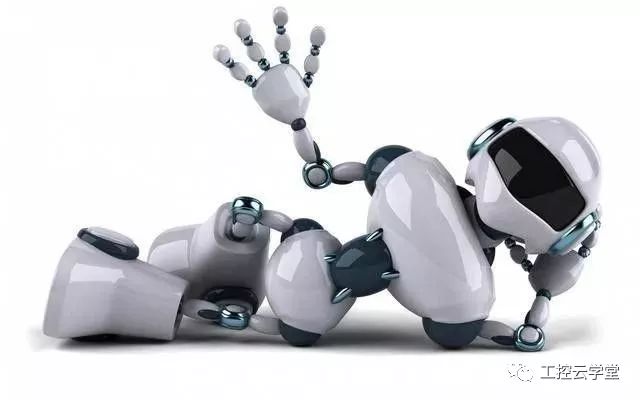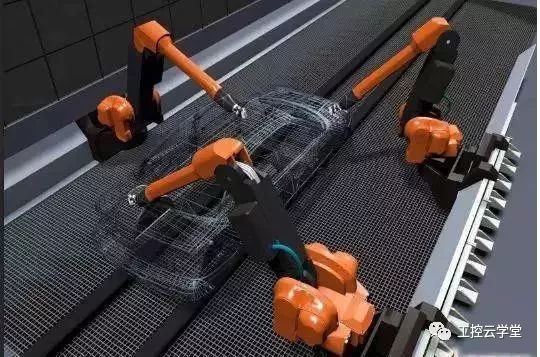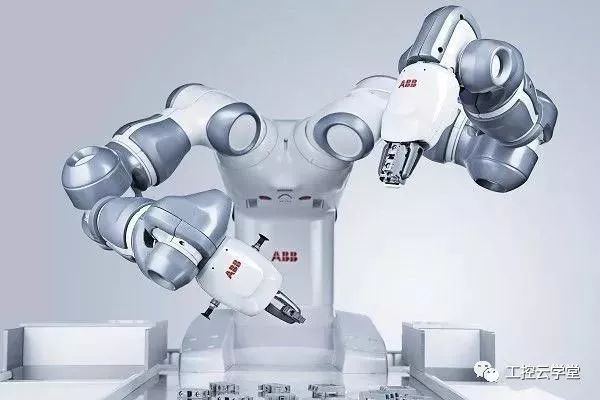Interpretation of robot programming and robot language
The robot is programmed to describe the sequence of actions that are set by the robot to perform certain tasks. The robot movement and the operation instructions are controlled by the program. There are two common programming methods, the teaching programming method and the offline programming method. Among them, teaching programming methods include teaching, editing and trajectory reproduction, which can be realized by teaching box teaching and guided teaching.
Because the teaching method is practical and easy to operate, most robots use this method. The off-line programming method is to use computer graphics results, to build geometric models with graphical processing tools, and to obtain job planning trajectories through some planning algorithms. Unlike teaching programming, offline programming does not have a relationship with the robot, and the robot can work as usual during the programming process. Industrial off-line tools are only used as an aid and have not been widely used.
Basic orderAfter entering the editing state with the EDIT instruction, you can use C, D, E, I, L, P, R, S, T and other commands to further edit. Such as:
C command: Change the editing program and replace it with a new one.
D command: delete the n line program from the current line, n default to delete the current line.
E command: Exit editing and return to monitoring mode.
I command: Move the current instruction down one line to insert an instruction.
P command: Display the contents of the program text from the current line to the next n lines.
T command: Initialize the joint interpolation program teaching mode. In this mode, press the “RECODE†button on the teaching box once to insert the MOVE command into the program.
List instruction
DIRECTORY instruction: The function of this instruction is to display all user program names in the memory.
LISTL instruction: The function is to display any position variable value.
LISTP command: The function is to display all programs of any user.
Store instruction
FORMAT command: Perform disk formatting.
STOREP command: The function is to store the specified program in the specified disk file.
STOREL instruction: This instruction stores all position variable names and variable values ​​noted in the user program.
LISTF instruction: The function of the instruction is to display the file directory currently input in the floppy disk.
LOADP instruction: The function is to send the program in the file into the memory.
LOADL instruction: The function is to send the position variable specified in the file into the system memory.
DELETE directive: This command revokes the file specified on the disk.
COMPRESS command: only used to compress disk space.
ERASE instruction: Erase magnetic content and initialize.

Control program execution instruction
ABORT command: Emergency stop (stop) after executing this command.
DO instruction: Execute a single step instruction.
EXECUTE instruction: This instruction executes the user-specified program n times, n can be from –32 768 to 32 767, and when n is omitted, the program executes once.
NEXT command: This command controls the program to execute in single step mode.
PROCEED instruction: This instruction implements the program from the next step after a pause, emergency stop or run error.
RETRY instruction: The function of the instruction is to re-run the program from that step after a running error occurs in a certain step.
SPEED instruction: The function of the instruction is to specify the movement speed of the robot under the control of the program. The value is from 0.01 to 327.67, and the normal speed is 100.
System status control instruction
CALIB command: This command calibrates the joint position sensor.
STATUS command: Used to display the status of the user program.
FREE command: Used to display the currently unused storage capacity.
ENABL instruction: Used to turn the system hardware on and off.
ZERO instruction: The function of this instruction is to clear all user programs and defined positions and reinitialize.
DONE: This instruction stops the monitoring program and enters the hardware debugging state.

1) Motion instruction
Instructions include GO, MOVE, MOVEI, MOVES, DRAW, APPRO, APPROS, DEPART, DRIVE, READY, OPEN, OPEN, CLOSE, CLOSEI, RELAX, GRASP, and DELAY.
Most of these instructions have the function of moving the robot from one pose to another in a specific way, and some commands indicate the opening and closing of the robot's claws. E.g:
MOVE #PICK!
Indicates that the robot moves from joint interpolation to the position defined by the precise PICK. "!" means that the position variable has its own value.
MOVET <location>, <hand opening>
The function is to generate the joint interpolation motion to make the robot reach the position given by the position variable. If the hand is servo control during the movement, the hand changes from closed to the value given by the hand opening variable.
Another example:
OPEN [<Hand opening degree>]
Indicates that the robot gripper is opened to the specified opening degree.
2) Robot pose control command
These instructions include RIGHTY, LEFTY, ABOVE, BELOW, FLIP, and NOFLIP.
3) Assignment instructions
Assignment instructions are SETI, TYPEI, HERE, SET, SHIFT, TOOL, INVERSE, and FRAME.
4) Control instructions
Control commands are GOTO, GOSUB, RETURN, IF, IFSIG, REACT, REACTI, IGNORE, SIGNAL, WAIT, PAUSE, and STOP.
Among them, GOTO and GOSUB implement unconditional transfer of the program, while IF instruction execution has conditional transfer. The format of the IF instruction is
IF <integer variable 1> <relationship> <integer variable 2> <relationship> THEN <identifier>
This instruction compares the values ​​of two integer variables. If the relationship state is true, the program goes to the line specified by the identifier to execute, otherwise it proceeds to the next line. Relational expressions have EQ (equal to), NE (not equal to), LT (less than), GT (greater than), LE (less than or equal to), and GE (greater than or equal to).
5) Switching value assignment instruction
Instructions include SPEED, COARSE, FINE, NONULL, NULL, INTOFF, and INTON.
6) Other instructions
Other instructions include REMARK and TYPE.

SIGLA language
SIGLA is a programming language used only for Cartesian SIGMA assembly robot motion control. It is a simple non-text language developed by Italian Olivetti in the late 1970s.
This language is mainly used for the control of assembly tasks. It can divide the assembly task into some assembly subtasks, such as taking the screwdriver, taking the screw A on the screw feeder, carrying the screw A, positioning the screw A, and loading the screw A. , tightening screws, etc. The subroutine is pre-programmed during programming and then completed by subroutine calling.
IML language
IML is also an action-level language that focuses on end-effectors and was developed by Kyushu University in Japan. The IML language is characterized by simple programming, human-machine dialogue, and suitable for on-site operation. Many complex actions can be realized by simple instructions, which are easy to be mastered by the operator.
IML describes the position and attitude of the robot and the object in a Cartesian coordinate system. There are two kinds of coordinate systems, one is the coordinate system of the base, and the other is the working coordinate system fixed to the working space of the robot. The language is programmed in the form of instructions, which can represent information such as the working point of the robot, the motion trajectory, the position and posture of the target, and thus can be directly programmed. The round-trip operation can be described without a loop statement. The trace of the teaching can be defined as the insertion of the instruction into the statement, and the application of certain forces can be completed.
The main commands of the IML language are: motion instruction MOVE, speed instruction SPEED, stop instruction STOP, finger opening and closing instruction OPEN and CLOSE, coordinate system definition instruction COORD, track definition command TRAJ, position definition command HERE, program control instruction IF...THEN, FOR EACH statement, CASE statement and DEFINE.
The separate single action that the task programmer can command the robot system to accomplish is the basic program function. For example, moving the tool to a specified position, operating the end of the device, or reading the number from the sensor or the hand input device. The system programmer of the robot workstation, whose responsibility is to select a set of basic functions that are most useful for the job of the job programmer. These basic functions include calculations, decision making, communication, robot movement, tool commands, and sensor data processing. Many running robotic systems provide only robotic motion and tool commands as well as some simple sensor data processing functions.

Operation
The specified computing power performed during the operation is one of the most important capabilities of the robot control system.
If the robot is not equipped with any sensors, then it may not be necessary to specify any operations on the robot program. A robot without a sensor is nothing more than a CNC machine suitable for programming.
Some of the most useful operations performed by robots with sensors are analytical geometry calculations. These results allow the robot to make its own decisions and where to place the tool or folder in the next step.
2. Decision
The robotic system is able to make decisions based on sensor input information without having to perform any calculations. Calculating the results based on unprocessed sensor data is the basis for making the next decision. This decision making capability makes the robot control system more powerful.

3. Communication
The communication capabilities between the robot system and the operator allow the robot to ask the operator to provide information, tell the operator what to do next, and let the operator know what the robot is going to do. People and machines can communicate in many different ways.
4. Robot movement
There are many different ways to specify the motion of the robot. The easiest way is to provide a set of joint positions to each joint servo and then wait for the servo to reach these specified positions. A more complicated method is to insert some intermediate positions in the robot workspace. This procedure allows all joints to start moving at the same time and stop moving at the same time. Representing the tool position with coordinates that are independent of the shape of the robot is a more advanced method, and (except for the XYZ robot) requires a computer to calculate the solution. Inserting a tool position within the Cartesian space enables the tool endpoint to smoothly move along the path following the trajectory. A reference coordinate system is introduced to describe the tool position and then move the coordinate system. This is convenient for many situations.
5. Tool instructions
A tool control command is usually triggered by closing a switch or relay, which in turn may turn the power on or off to directly control tool motion or send a low power signal to the electronic controller. Go to the control tool. Direct control is the easiest method and requires less control system. Sensors can be used to feel the performance of the tool movement and its functions.

6. Sensing data processing
A general purpose computer for robotic control can only be used if it is connected to a sensor. We already know that sensors come in many forms. In addition, we follow the function and summarize the sensor as follows:
(1) Endosomes are used to sense the position of a robot or other computer-controlled articulated mechanism.
(2) The tactile sensor is used to sense the actual contact between the tool and the object (workpiece).
(3) The proximity or distance sensor is used to sense the distance from the tool to the workpiece or obstacle.
(4) Force and torque sensors are used to sense the forces and moments generated when assembling (such as inserting a pin into a hole).
(5) Vision sensors are used to "see" objects in the workspace, determine the position of the objects or (and) identify their shape, and so on. Sensing data processing is a very important and complex component of many robot programming.
Vacuum fluorescent display, referred to as VFD, is a low-energy electroluminescent display devices, the working principle and CRT similar. It has the incomparable advantage of liquid crystal display (LCD) in applications where there is a large variation in ambient brightness and no strict requirement for low power consumption, and is now widely used in audio-visual equipment, home electronics, automotive instruments, office equipment and instrumentation.
The structure of a VFD board is a typical vacuum triode structure, consisting of a cathode, a grid and an anode. In between the cathode and the anode there's a thin mesh of metal called the Grid that can be switched on or off, controlling the flow of electrons from the cathode to the anode. This VFD grid mesh is made of a thin metal plate with a thickness of 30 to 50μm, which is lithographed and made into a highly transparent fine lattice or tortoise-shaped metal mesh. When a positive voltage is applied to the grid, electrons emitted from the filament are accelerated and diffused toward the anode. When a negative voltage is applied to the grid, electron flow to the anode is cut off.
We custom VFD Grid with drawings provided by customers. The raw material we use for etched VFD Grid is SUS430 stainless steel. We are equipped with professional metal etching equipment and exposure development equipment. Our etched manufacturing capacity can achieve 0.05mm.
Vacuum Fluorescent Display Grid,VFD Grid,Custom VFD Grid,Etched VFD Grid,VFD Grid Mesh
SHAOXING HUALI ELECTRONICS CO., LTD. , https://www.cnsxhuali.com